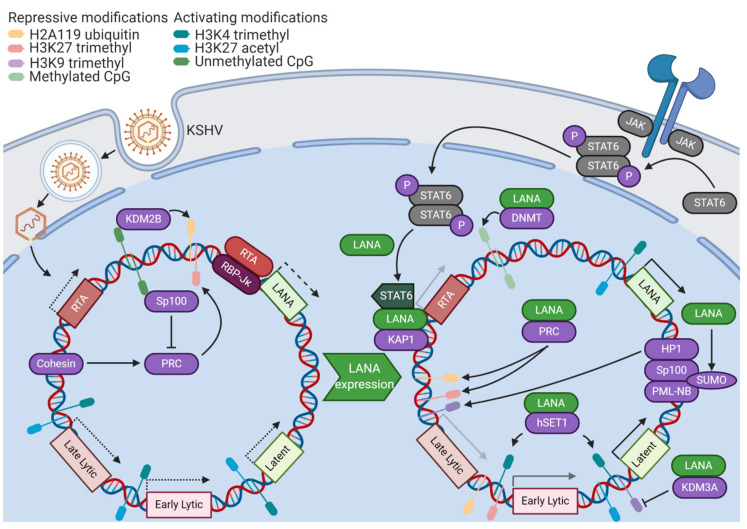Figure 1.
The Kaposi’s sarcoma-associated herpesvirus (KSHV) genome enters a latent state after de novo infection. In some cells, early expression of lytic genes such as replication and transcription activator (RTA) triggers expression of the master organizer of latency, latency-associated nuclear antigen (LANA). LANA recruits many components of the host epigenetic machinery to promote the formation of latent KSHV episomes. A pattern of transcriptionally-permissive histone modifications across the KSHV genome gives way to a generally-repressive chromatin state, sparing robust latent gene expression. Lytic gene expression becomes minimal but poised for upregulation upon reactivation.

